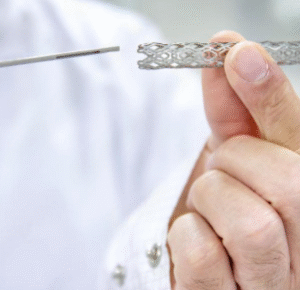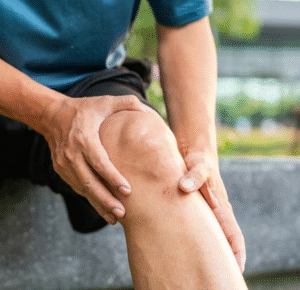When I first heard about Hyperbaric Oxygen Therapy (HBOT), I was fascinated by its potential to heal and rejuvenate. This treatment involves breathing pure oxygen in a pressurized chamber, which can enhance the body’s natural healing processes. It’s not just for divers with decompression sickness; HBOT has a wide range of applications from treating chronic wounds to improving cognitive function.
As I delved deeper into the subject, I discovered that many people are unaware of the full spectrum of benefits this therapy offers. Whether you’re exploring alternative treatments for a medical condition or simply curious about cutting-edge health technologies, understanding HBOT could open new doors to wellness and recovery. Let’s dive into how this innovative therapy works and why it’s gaining traction in both medical and wellness communities. Incorporating quality camping equipment into your outdoor adventures can further enhance your overall wellness and recovery by providing comfort and support during your time in nature.
What Is Hyperbaric Oxygen Therapy?
Hyperbaric Oxygen Therapy (HBOT) involves breathing 100% oxygen in a pressurized chamber. This treatment increases oxygen levels in the blood, promoting faster healing. During a session, you typically lie in a comfortable chamber while the air pressure is increased to 1.5 to 3 times higher than normal atmospheric pressure.
HBOT enhances the body’s natural healing processes. For instance, increased oxygen supply helps repair damaged tissues and reduce inflammation. This therapy is widely recognized for its efficacy in treating decompression sickness, but its applications extend beyond that.
Patients benefit from HBOT in treating various conditions. Chronic wounds, certain infections, and carbon monoxide poisoning, for example, show significant improvement with this therapy. The increased pressure allows more oxygen to dissolve in the plasma, reaching areas with compromised blood flow.
Sessions usually last from 60 to 120 minutes. The number of sessions depends on the condition being treated, with some cases requiring up to 40 treatments. Relaxing in the chamber becomes easier over time, making the therapy a manageable part of the healing routine.
How Hyperbaric Oxygen Therapy Works
Hyperbaric Oxygen Therapy (HBOT) involves increased oxygen concentration in a pressurized environment. During a session, patients breathe 100% pure oxygen in a chamber with pressure levels higher than atmospheric pressure. This pressure increase allows oxygen to dissolve more efficiently in blood plasma, enhancing oxygen delivery to tissues.
The process starts with sealing the patient in the hyperbaric chamber. The chamber’s pressure slowly rises to 1.5 to 3 times the normal atmospheric pressure. This hyperbaric condition significantly boosts the plasma’s oxygen-carrying capacity.
At higher oxygen concentration levels, HBOT promotes angiogenesis, which helps blood vessel formation. This elevates blood flow to damaged tissues, enhancing healing. The elevated pressure also reduces swelling and inflammation, aiding rapid recovery. For instance, leg ulcers and diabetic foot wounds respond well to HBOT with quicker healing times.
HBOT performs especially well in addressing infections. High oxygen levels create an unfriendly environment for anaerobic bacteria, enhancing the body’s natural defense mechanisms. In cases of carbon monoxide poisoning, increased oxygen displaces carbon monoxide from hemoglobin, reducing toxicity.
Typical HBOT sessions last 60-120 minutes, depending on the treatment plan. Physicians determine the number of treatments based on individual medical conditions. Accurate dosing matters since overexposure to oxygen might lead to oxygen toxicity.
HBOT’s effectiveness in delivering therapeutic benefits depends on the unique properties of oxygen under pressure. Focusing on conditions with compromised blood flow, it accelerates the body’s natural healing processes, providing significant patient benefits.
Benefits of Hyperbaric Oxygen Therapy
Hyperbaric Oxygen Therapy (HBOT) offers numerous health benefits by utilizing increased oxygen levels to enhance physiological functions. It provides several key advantages.
Promotes Healing
HBOT speeds up the healing process by elevating oxygen delivery to damaged tissues. Enhanced oxygen supply leads to improved tissue regeneration and quicker recovery. For instance, patients with non-healing wounds like diabetic foot ulcers or leg ulcers notice significant enhancements in wound closure rates after consistent HBOT sessions.
Reduces Inflammation
HBOT effectively reduces inflammation. Increased oxygen levels diminish the inflammatory response by limiting inflammatory cell activity and promoting anti-inflammatory protein production. This is particularly beneficial for conditions such as arthritis, where reduced inflammation translates to decreased pain and improved joint function.
Enhances Brain Function
HBOT boosts cognitive function by increasing oxygen delivery to brain tissues. Enhanced oxygenation supports neurological repair and cognitive improvements. For example, individuals recovering from traumatic brain injuries or strokes experience notable enhancements in memory, clarity, and overall cognitive performance post-HBOT sessions.
Applications of Hyperbaric Oxygen Therapy
Hyperbaric Oxygen Therapy (HBOT) has broad applications in medicine, sports, and wellness. By increasing oxygen levels in the bloodstream, it supports various health and recovery processes.
Medical Conditions
HBOT treats numerous medical conditions by enhancing oxygen delivery to tissues. It’s beneficial for non-healing wounds, like diabetic foot ulcers. The therapy mitigates infections such as osteomyelitis. Additionally, HBOT aids recovery from radiation injuries by repairing damaged tissues. Decompression sickness, commonly seen in divers, also improves with HBOT, thanks to the therapy’s ability to reduce nitrogen bubbles in the blood.
Sports and Fitness
Athletes use HBOT to accelerate recovery from injuries and enhance performance. By reducing inflammation and boosting oxygen supply to muscles, the therapy aids in quicker muscle repair. For instance, sprains and strains heal faster, and it improves endurance by facilitating efficient oxygen usage. Additionally, HBOT helps reduce exercise-induced muscle soreness, allowing athletes to train more effectively.
Cosmetic and Wellness
HBOT offers several benefits in the cosmetic and wellness sector. It reduces signs of aging by enhancing collagen production, contributing to healthier skin. The therapy also aids in detoxification, leading to improved overall wellness. For instance, individuals seeking enhanced skin vitality and reduced fine lines find HBOT beneficial. Furthermore, it supports weight management by improving metabolic function and aiding in faster recovery from cosmetic procedures.
Potential Risks and Side Effects
Even though Hyperbaric Oxygen Therapy (HBOT) offers many benefits, it’s critical to understand the potential risks and side effects.
Barotrauma
HBOT involves increasing atmospheric pressure, which might lead to barotrauma. This condition includes ear pain, sinus discomfort, or lung collapse in severe cases. Individuals with preexisting ear, sinus, or lung issues might be more susceptible.
Oxygen Toxicity
Exposure to high oxygen levels for an extended period can result in oxygen toxicity. Symptoms might include vision changes, seizures, or lung damage. Sessions typically last 60-90 minutes to minimize this risk.
Claustrophobia
Some people experience claustrophobia inside the hyperbaric chamber. The enclosed space may cause anxiety or fear. Techniques such as relaxation exercises help mitigate this effect.
Changes in Blood Sugar Levels
Diabetic patients might experience fluctuations in blood sugar levels during therapy. Continuous monitoring of glucose levels before and after sessions is recommended.
Fire Hazard
Since oxygen is highly flammable, there’s an increased fire hazard in hyperbaric chambers. Strict protocols and guidelines minimize this risk, ensuring a safe environment.
By understanding these potential risks and side effects, patients, and practitioners can plan and execute HBOT sessions more safely and effectively.




